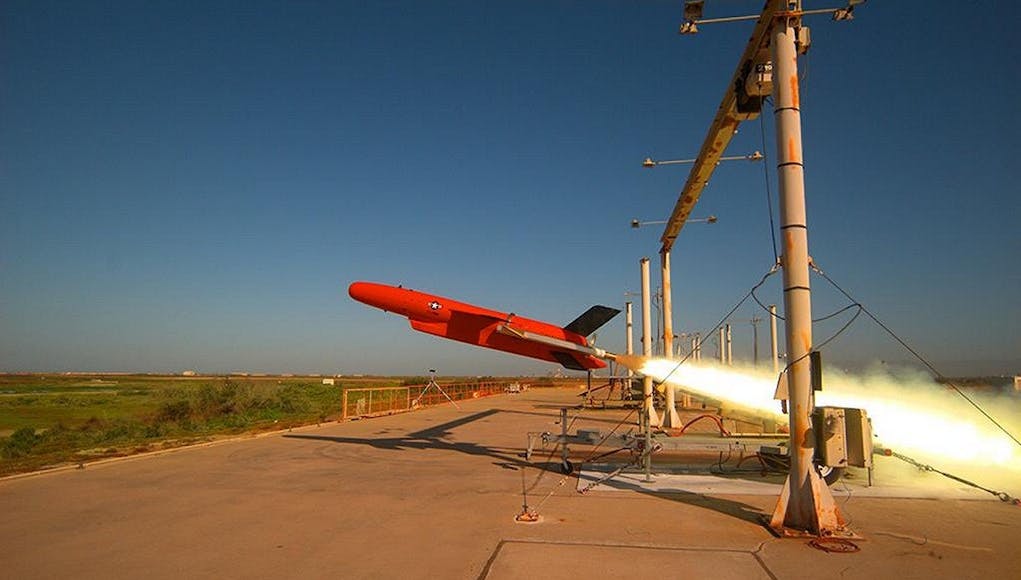The US Navy’s next-generation Sub-Sonic Aerial Target, BQM-177A, reached Initial Operational Capability late last month.
The system will begin land-based operations in Point Mugu, California.
The BQM-177A, say the US Navy, provides realistic threat representation for developmental and operational testing of major DoD and international weapon systems.
“BQM-177A represents the current threats to our forces and delivers improvements in speed and maneuverability to the subsonic target inventory,” said Capt. Molly Boron, Navy Aerial Targets (PMA-208) program manager.
“I am proud of the collaborative work between our subsonic integrated product team and the operators at Pacific Targets and Marine Operations for reaching this milestone.”
BQM-177A is a recoverable target that will replace the legacy recoverable BQM-74E target with a modernized subsonic target with increased capabilities.
The target is capable of speeds in excess of 0.9 Mach and a sea-skimming altitude as low as 10 feet.
When the target reaches full operational capability, it will conduct both land and ship-based operations, say the US Navy.














What’s the point of a sub sonic test drone? Any realistic threat is going to be supersonic or a surface vessel which will be below the 10m range. Surely you want to test your equipment against realistic targets?
Found answer to own question, all the main sea skimming missiles are sub sonic although do appear to have a lower flight height of 1m compared to 10, but how realistic the 1m is, with waves etc, is another question.
…except the russian ans chinese ones. While it’s true that the Russians and Chinese have sub-sonic anti-ship missiles, their most powerful ships and subs carry supersonic, highly agile anti-ship missiles. Thats the threat that needs to be modelled.
US already has the GQM-163 Coyote missile (Mach4) for those kind of simulations.
RAN’s Anzac frigates have proven intercept capability against multiple supersonic Coyotes.
If only the Russians & Chinese would paint their missiles bright red & plod along at us at sub-sonic we might have half a chance. Modern ASMs can use evasive manouvres & the most dangerous are high supersonic to hypersonic, designed to attack in swarms to overwhelm our ships defences. In 10 years time we might have a similar capability, but meantime let’s carry on like peace will last forever, run down our fleet & give our new ships as little protection as we can-so long as it keeps the treasury happy. Off to the beach to bury my head in the sand like our politicians love to do.
Reality check .
When was the last time a Supersonic anti ship missile was launched at a ship during a conflict?
Answer…Never.
All previous missile launches against ships have been sub sonic. So Styx, Exocet, Seersucker, Silkworm Harpoon, Siren..
The last launch if I remember correctly was by Hezbollah against an Israeli Corvette and that was probably a Silkworm. (I wonder what country that came from…)
So the risk is likely to be that you are going to be facing a subsonic missile launched by a sub peer adversary.
As i have said before … Supersonic and high supersonic threats have been in existence from the mid sixties. They are not a new threat that has suddenly appeared. Most first rate navies have SOPs to deal with them. Basically the SOP is to kill the launcher, Kill the mid course guidance unit and if all else fails you are then in the realms of soft and hard kill.
As a note… I have done many Anti Ship Missile drills against towed and self powered targets, I even had 2 exocet shot at the ship I was on during trials in the early 80s. During shoots conducted over the years the RN has shot at sub and supersonic targets so it is practised.